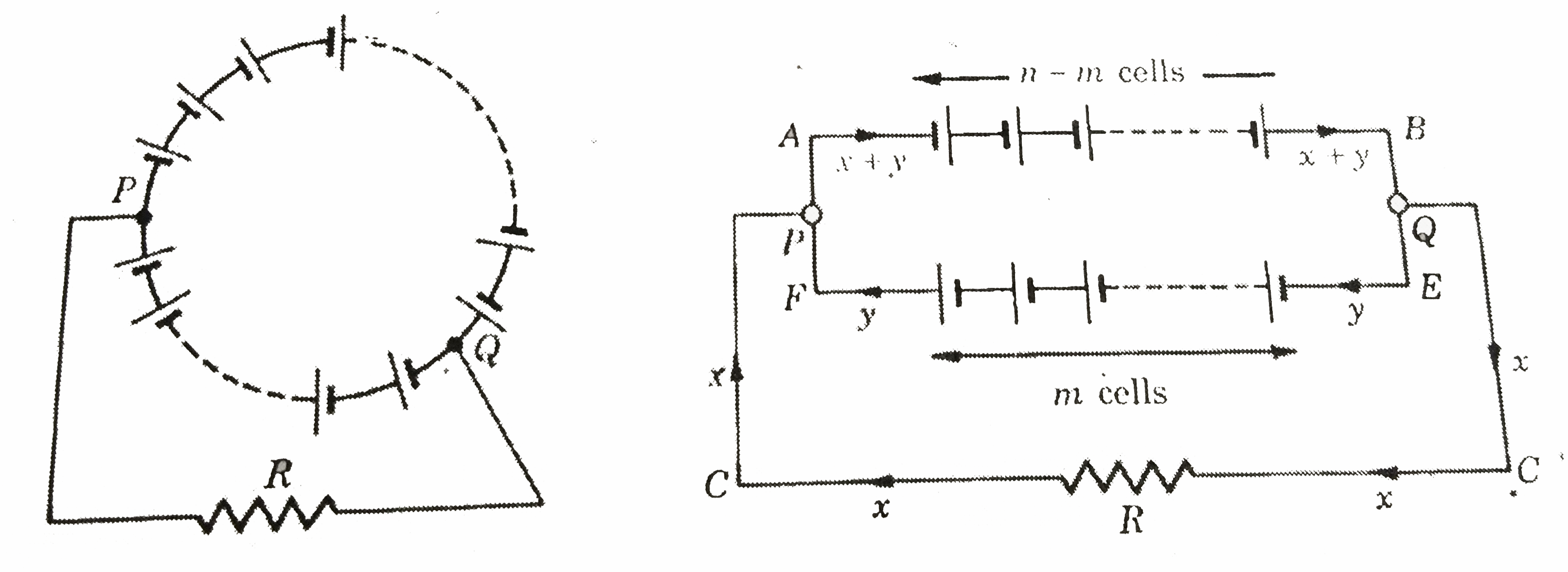Conventional current flows from the negative terminal of the power source to the positive terminal.
To solve the question regarding the direction of conventional current flow, we can follow these steps:
Step 1: Understand Conventional Current
Conventional current is defined as the flow of positive charge. By convention, it is considered to flow from the positive terminal to the negative terminal of a power source.
Step 2: Identify the Power Source
In the given scenario, we have a power source (battery) with a positive terminal and a negative terminal.
Step 3: Analyze the Circuit
When a circuit is connected, the conventional current flows out of the positive terminal of the battery, through the circuit, and returns to the negative terminal of the battery.
Step 4: Draw the Circuit Diagram
You can visualize the circuit as follows:
- The battery has a positive (+) terminal and a negative (-) terminal.
- A resistor (R) is connected in series with the battery.
- The current flows from the positive terminal of the battery, through the resistor, and back to the negative terminal.
Step 5: Conclude the Direction of Current Flow
Based on the above understanding, the statement in the question is incorrect. The conventional current does not flow from the negative terminal to the positive terminal; rather, it flows from the positive terminal to the negative terminal of the power source.
Final Conclusion
Thus, the correct statement is that conventional current flows from the positive terminal of the power source to the negative terminal.
---
Conventional current is defined as the flow of positive charge. By convention, it is considered to flow from the positive terminal to the negative terminal of a power source.
In the given scenario, we have a power source (battery) with a positive terminal and a negative terminal.
When a circuit is connected, the conventional current flows out of the positive terminal of the battery, through the circuit, and returns to the negative terminal of the battery.
You can visualize the circuit as follows:
- The battery has a positive (+) terminal and a negative (-) terminal.
- A resistor (R) is connected in series with the battery.
- The current flows from the positive terminal of the battery, through the resistor, and back to the negative terminal.
Based on the above understanding, the statement in the question is incorrect. The conventional current does not flow from the negative terminal to the positive terminal; rather, it flows from the positive terminal to the negative terminal of the power source.
Thus, the correct statement is that conventional current flows from the positive terminal of the power source to the negative terminal.
Similar Questions
An electrode that is connected to the positive terminal.
View SolutionA working transistor with its three legs marked P,QandR is tested using a multimeter No conduction is found between P,Q by connecting the common (negative) terminal of the multimeter to R and the other (positive) terminal to P or Q some resistance is seen on the multimeter . Which of the following is true for the transistor ?
View SolutionA working transitor with its three legs marked P,QandR is tested using a multimeter No conduction is found between 'P',Qby connecting the common (negative) terminal of the multimeter to Rand the other (positive) terminal to P or Q some resistance is seen on the multimeter . Which of the following is true for the transistor ?
View SolutionA working transitor with its three legs marked P,QandR is tested using a multimeter No conduction is found between P,Qby connecting the common (negative) terminal of the multimeter to Rand the other (positive) terminal to or Q some resistance is seen on the multimeter . Which of the following is true for the transistor ?
View Solution
Assertion:In the part of a circuit shown in figure, given that Vb>Va. The current should flow from b to a.
Reason: Direction of current inside a battry is always from negative terminal to positive terminal.
View SolutionTwo identical capacitors are connected in the circuit shown. C2 is charged to 100V and switch S is shifted from position 1 to position 2. The negative terminal of C2 is connected with the positive terminal of C1. Find the work done by the battery. If the polarity of C2 were reversed, what work would have been done by the battery ?

View SolutionHow much work is required to carry a 6μC charge from the negative terminal to the positive terminal of a 9 V battery?
View SolutionThe potential difference across the terminals of a battery is 10 V when there is a current of 3 A in the battery from the negative to the positive terminal. When the current is 2A in the reverse direction, the potential difference becomes 15 V. The internal resistance of the battery is
View SolutionThe potential difference across the terminals of a battery is 8.4V when there is a current of 1.50A in the battery from the negative to the positive terminal. When the current is 3.50Air, the reverse direction, the potential difference becomes 9.4V.
(a) What is the internal resistance of the battery?
(b) What is the emf of the battery?
View Solutionn' cells , each of emf 'e' and internal resistance 'r' are connected in a closed circuit so that the positive terminal of a cell is joined to the negative terminal of the next, as shown in figure. Any two points of the circuit are connected by an external resistance R. Find the current in R.

View Solution
